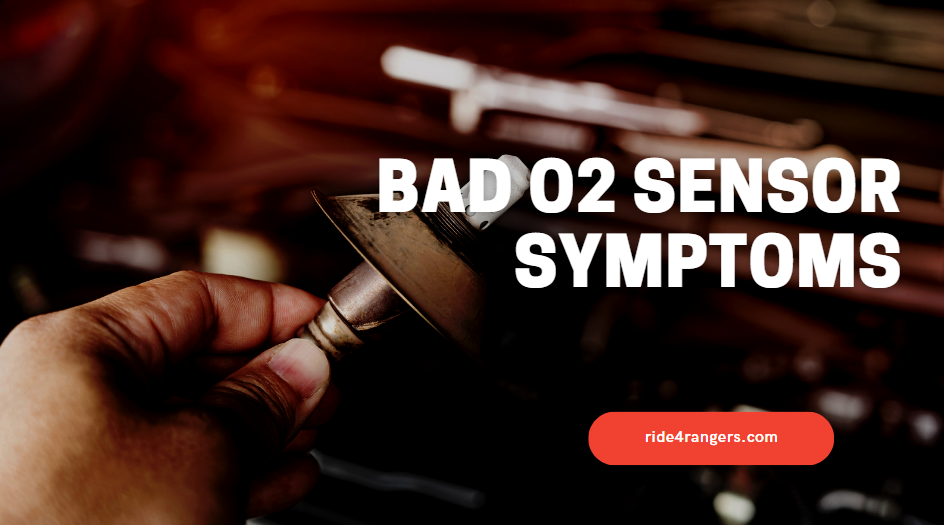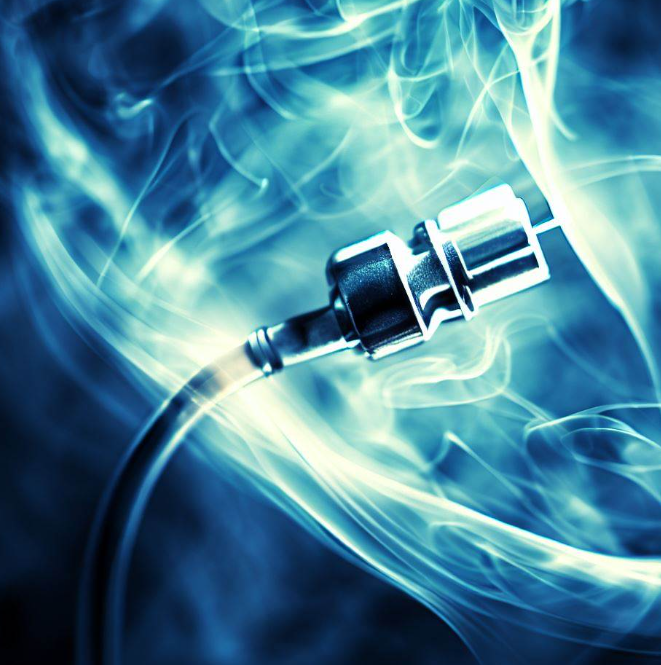The oxygen sensor, often abbreviated as the O2 sensor, plays a pivotal role in the optimal functioning of a vehicle. It’s a small component, often unnoticed but playing a crucial part in managing the car’s engine performance and emissions.
This sensor resides within your vehicle’s exhaust system and is primarily responsible for tracking the amount of unburnt oxygen present in the exhaust. It feeds this data back to the engine control unit (ECU), which utilizes this information to adjust the air-fuel mixture entering the engine. This process ensures efficient combustion, leading to better fuel economy and lower emissions.
A faulty oxygen sensor can create a domino effect of problems, primarily because it disrupts the intricate balance of the air-fuel mixture in the engine. In essence, it affects the engine’s performance and increases emissions, leading to potential environmental harm.

1. The Dreaded Check Engine Light
Undeniably, one of the most straightforward bad O2 sensor symptoms is the illumination of the check engine light on your vehicle’s dashboard. Modern vehicles come equipped with onboard diagnostics (OBD), an intelligent system that keeps track of various parameters linked to the vehicle’s performance. When the system identifies an anomaly in these parameters, it activates the check engine light.
A malfunctioning oxygen sensor can send incorrect data to the ECU. If the ECU detects these irregularities, it triggers the check engine light. But keep in mind, this light can also signal a multitude of other issues – from a loose fuel cap to severe engine problems. Therefore, the appearance of the check engine light warrants a more in-depth investigation to identify the root cause.
2. A Guzzling Fuel Economy

Your vehicle’s O2 sensor has a profound impact on fuel efficiency. It monitors and helps manage the fuel-air mixture combusted in the engine, optimizing fuel usage. So, if you notice a sudden increase in your vehicle’s fuel consumption or a decrease in miles per gallon, you could be dealing with bad oxygen sensor symptoms.
An impaired O2 sensor may send inaccurate information to the ECU, causing the engine to run rich – using more fuel than necessary. This condition not only contributes to increased fuel consumption but also leads to higher emissions and can even cause damage to other engine components over time.
3. Rough Idle Spells Trouble
A vehicle’s idle state should be steady and smooth when the engine is running but the car isn’t moving. A rough or erratic idle, characterized by the engine’s RPM fluctuating noticeably, is one of the significant signs of a bad O2 sensor. This symptom often becomes apparent when you’re at a red light or a stop sign.
A malfunctioning O2 sensor disrupts the balance of the fuel-air mixture, causing inconsistencies in the engine combustion process. This issue often results in a rough or unstable idle. However, other faults can also cause a rough idle, such as a bad Idle Air Control Valve. Therefore, further diagnostics are required to pinpoint the exact issue.
4. Misfires and Engine Hesitation
Engine misfires or hesitation during acceleration can be distressing for any driver. These are often indicators of bad downstream O2 sensor symptoms. The O2 sensor plays a crucial role in managing the fuel-air mixture combusted in the engine. If it’s malfunctioning, it can lead to a lean or rich mix, causing unburnt fuel to enter the exhaust system.
When there’s too much fuel (a rich mix) that the spark plug can’t burn, it results in misfires. Similarly, when there’s insufficient fuel (a lean mix), it could lead to hesitation during acceleration as the engine struggles to generate power.
5. High Emission Levels
Vehicle emissions are a significant environmental concern, and governments worldwide enforce strict emission standards for vehicles. The O2 sensor is one of the components that help regulate and minimize the emission of harmful pollutants. Therefore, if your vehicle fails an emissions test, it might be due to O2 sensor failure symptoms.
The sensor’s main role is to ensure the optimal fuel-air mixture for combustion. If it malfunctions, it can cause the engine to run rich or lean, leading to an increase in harmful emissions such as nitrogen oxides and carbon monoxide. Regular maintenance and inspections can help avoid this issue and contribute to a healthier environment.
6. Dip in Performance and Power

A car’s performance and power output are directly linked to the combustion efficiency in the engine. This efficiency is, in turn, monitored and regulated by the O2 sensor. If you notice a marked decrease in your vehicle’s power, especially during acceleration, you could be experiencing bad upstream O2 sensor symptoms.
A faulty O2 sensor can cause the air-fuel mixture to be too rich or too lean, leading to inefficient combustion. This inefficiency manifests as a reduction in engine power and overall vehicle performance. If left unchecked, it can lead to severe engine damage over time.
7. Unusual Smells
Your vehicle’s exhaust shouldn’t generally emit strong or unusual odors. If you start noticing a smell akin to rotten eggs or sulfur coming from the exhaust, it’s a red flag indicating a potential faulty oxygen sensor.
An impaired sensor may cause the fuel mixture to run rich, resulting in incomplete combustion. The unburnt fuel then enters the exhaust system and can produce a strong odor, particularly when the vehicle is running or shortly after it’s turned off.
8. Premature Failure of the Catalytic Converter
The catalytic converter is an integral part of the vehicle’s exhaust system. It’s responsible for converting harmful pollutants into less harmful substances before they’re released from the exhaust. A key sign of a bad O2 sensor is the premature failure of the catalytic converter.
A faulty O2 sensor can cause a rich fuel-air mixture, resulting in unburnt fuel entering the catalytic converter. Over time, this unburnt fuel can damage the converter, leading to its premature failure. This issue is a serious and costly problem that requires immediate attention.
Identifying the Causes and Evaluating the Cost of O2 Sensor Failure
The failure of an O2 sensor can be traced back to two primary causes. The first is contamination from oil, coolant, or excessive fuel. This contamination can block the sensor, preventing it from accurately measuring the amount of oxygen in the exhaust gases.
The second cause is normal wear and tear. Like most components in a vehicle, O2 sensors are not designed to last forever. Over time, they can deteriorate and fail, particularly in vehicles with high mileage.
Replacing a faulty O2 sensor as soon as you notice any symptoms can save you from more significant expenses down the line. The cost for this procedure typically ranges from $100 to $400, including both parts and labor. However, if left unchecked, the issue could lead to more extensive damage such as a failed catalytic converter, which can cost up to $2000 to replace.
Conclusion
Paying attention to the bad O2 sensor symptoms can significantly contribute to the maintenance of your vehicle’s performance and your contribution to a cleaner environment. If you observe any of these symptoms, get your vehicle checked by a professional immediately. Prompt action can help you avoid substantial repair costs in the future.
FAQs
1. What role does an O2 sensor play in a vehicle?
The oxygen sensor is crucial in maintaining the car’s engine performance and controlling emissions. It’s responsible for monitoring the amount of unburnt oxygen present in the exhaust, allowing the ECU to adjust the air-fuel mixture. This process ensures efficient combustion, leading to better fuel economy and lower emissions.
2. How do I know if my O2 sensor is bad?
Several symptoms indicate a bad O2 sensor. These include the check engine light turning on, decreased fuel efficiency, a rough idle, engine misfires, higher emission levels, reduced performance, unusual smells from the exhaust, and premature failure of the catalytic converter.
3. What causes an O2 sensor to fail?
The two primary causes of O2 sensor failure are contamination and normal wear and tear. Contaminants like oil, coolant, or excessive fuel can block the sensor, affecting its ability to measure oxygen levels accurately. Over time, normal usage and high mileage can also lead to the sensor’s deterioration.
4. How much does it cost to replace an O2 sensor?
The cost to replace a faulty O2 sensor typically ranges from $100 to $400, including both parts and labor. It’s important to address this issue promptly to avoid more extensive damage, like a failed catalytic converter, which can cost up to $2000 to replace.
5. Does a bad O2 sensor affect emissions?
Yes, a bad O2 sensor can cause increased emission levels. A malfunctioning sensor can disrupt the optimal fuel-air mixture for combustion, leading to increased emissions of harmful pollutants like nitrogen oxides and carbon monoxide.
Philip Davis is a skilled car mechanic and a passionate automotive blogger.
With extensive experience in the field, Philip has honed his expertise in diagnosing and repairing various car models and tackling complex mechanical issues.
As an avid blogger, Philip loves sharing his knowledge and insights with car enthusiasts and owners. Through his well-researched articles and informative blog posts, he aims to educate readers on car maintenance, troubleshooting, and the latest automotive trends.
When he’s not working under the hood or crafting compelling blog content, Philip enjoys attending car shows, exploring new driving experiences, and staying connected with the vibrant car community.